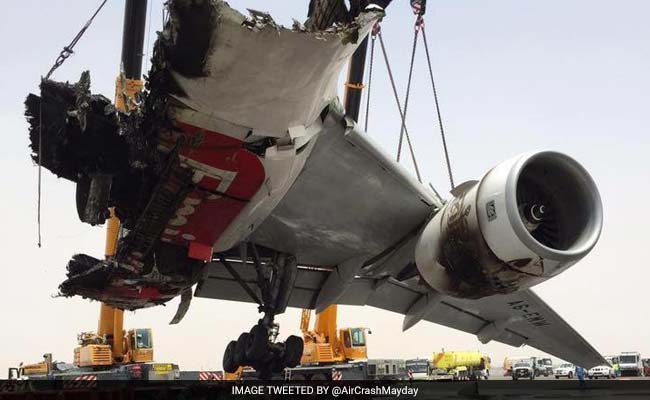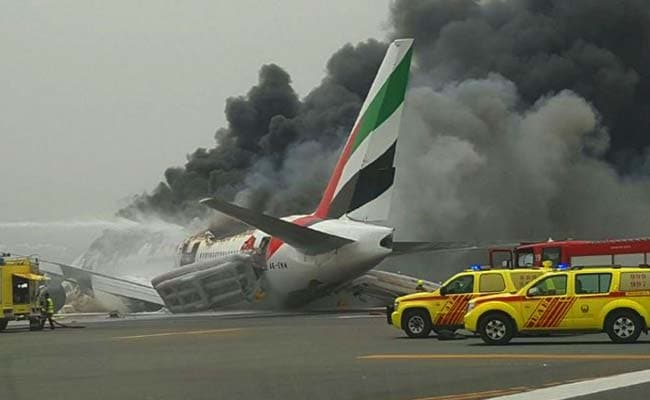 |
| Wreckage of the Aircarft |
NDTV has exclusively accessed the "Event Summary" of the accident filed by the pilots of the Boeing 777, which spells out the details of the final moments before the plane crashed to a halt partly on its belly, one of its Rolls Royce engines having been torn off the wing of the jet.
There were nearly 300 passengers and crew on board, most of them from Kerala, who were evacuated seconds before the plane went up in flames.
The pilots write of deciding on a go-around - a routine procedure which involves a second attempt at landing.
"During flare, updraft caused the a/c [aircraft] to float till after the end of the touchdown zone, we decided to G/A [go around]." In other words, the gusting winds meant the pilots were unable to land the jet safely at the spot on the runway they had chosen. With the length of the runway running out, they opted to abort the landing for the "go around".
"During flare, updraft caused the a/c [aircraft] to float till after the end of the touchdown zone, we decided to G/A [go around]." In other words, the gusting winds meant the pilots were unable to land the jet safely at the spot on the runway they had chosen. With the length of the runway running out, they opted to abort the landing for the "go around".
 | |
It
was here that things went disastrously wrong. Shear is a potentially
hazardous condition involving sudden and unpredictable changes in wind
direction or speed. Very often, wind shear conditions are impossible to
detect by any systems even on modern aircraft.
The pilots write that initially, the go-around appeared to be working but then, "Speed dropped rapidly below the top of amber band due to W/S [wind shear]. W/S proc [wind shear procedure] was done, however the A/C [aircraft] crash landed on the RW [runway] and skidded off it to come to a complete stop off the R/W [runway] with fire and fumes covering the whole A/C [aircraft]."
The pilots write that initially, the go-around appeared to be working but then, "Speed dropped rapidly below the top of amber band due to W/S [wind shear]. W/S proc [wind shear procedure] was done, however the A/C [aircraft] crash landed on the RW [runway] and skidded off it to come to a complete stop off the R/W [runway] with fire and fumes covering the whole A/C [aircraft]."
 |
| Emirates Airline flight after it crash-landed at Dubai International Airport on August 3, 2016. |
According to a senior Boeing 777 commander
NDTV has spoken to, a pilot aborting a landing during wind shear
conditions needs to apply full power to the two engines of the aircraft
and continue to raise the nose of the jet till an in-cockpit warning is
sounded that the aircraft is on the verge of stalling. Then, the plane
will break free of the grasp of wind shear.
But instead, the two engines of the Emirates 777 were probably at their lowest power setting at the point of landing. It takes a full eight seconds for the giant Rolls Royce engines of the aircraft to rev up to the maximum thrust, which would allow it to break free of the wind shear. By the time the engines likely did that, it was too late -the aircraft had already crashed.
The fact that the pilots chose to raise their undercarriage may have been the wrong decision because the process "can create tremendous drag," drastically slowing down the process of the aircraft gaining speed and height.
When asked about what the pilots have documented, Emirates said, "The incident is currently being investigated by the relevant authorities, and Emirates is extending our full co-operation in this regard. We are unable to comment further."


0 comments:
Post a Comment
PLEASE BE POLITE